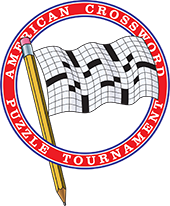His puzzling avocation is no trivial pursuit
Source: The Boston GlobeDate: March 17, 2008
Byline: Billy Baker
His puzzling avocation is no trivial pursuit
MATHEMATICIAN KIRAN KEDLAYA | MEETING THE MINDS
His puzzling avocation is no trivial pursuit
Kiran Kedlaya is an associate math professor at MIT. Delroy Lindo is a Hollywood actor. Earlier this month, their paths crossed.
Unfortunately for Kedlaya, he had never heard of Lindo; if he had just known Lindo's first name, he would have made the finals of the American Crossword Puzzle Tournament, instead of finishing ninth.
That's how it goes in the highest ranks of competitive crossword solvers, Kedlaya said. One little mistake — that was the only one Kedlaya made in the four-day tournament — and you're toast. At this level, getting the answers right must be a given, because to win you've got to finish the fastest.
Last week, as he twisted the cap on a mechanical pencil and prepared to tackle a Wednesday New York Times crossword puzzle in his office at MIT. Kedlaya said he doesn't obsess over mistakes. "I don't have my white whale like Ahab," he said, finishing the puzzle with a "slow time" of 5:19. "You can't get hung up on one answer, because in crossword puzzles, it's going to be something else the next time."
The hallowed halls of MIT's math department might seem an unlikely place to find a star in game that is about words and trivia, but Kedlaya doesn't think it's that far-fetched. He views crosswords as a blend of language and math skills, a logic puzzle of intersections.
"What I like is that everything comes together, both literally and figuratively," said the 33-year-old Kedlaya, whose research focuses on number theory and algebraic geometry. "In my day job, that doesn't happen enough."
Many top crossword solvers have a background in music, he said, which has a well-documented connection to the mathematical mind (many, he added, are also jugglers, which has a similarly documented connection to math). So he doesn't think it's much of a leap to see why a mathematician would be a fixture in the top 10 of the country's premier crossword puzzle tournament, as Kedlaya has been for the last half-dozen years.
Mike Sipser, the head of MIT's math department, said that many mathematicians have a natural attraction to puzzles (Kedlaya isn't the only one in MIT's math department with a Rubik's Cube in his office). Grad students in the department get together every afternoon over tea to tackle the Times crossword (Kedlaya doesn't read over their shoulders, but he's there to "help" if they get stuck).
And Sipser thinks that the attention afforded to Kedlaya for his hobby can only be a good thing for the mathematician's image.
"I think that mathematics does, for various reasons, have this feeling of remoteness," Sipser said. "One of my goals is to make math more accessible, and something like this helps that. It's good to see us struggle with puzzles that nonmathematicians would struggle with, too."
Kedlaya first started doing the Times crossword as an undergraduate at Harvard, and got good enough that he decided to make a trip down to Stamford, Conn., to try his hand at the tournament in 1997. He did well for a rookie — top 50 — and got encouragement from what he describes as the "tight-knit" crossword community to get more serious.
So, how does one get serious at crosswords? They do more crosswords.
When he's preparing for the tournament, Kedlaya said he will time himself doing a couple of crossword puzzles a day and practice little tactics to shave off a few seconds, such as filling in one answer while he reads another clue, or practicing his crossword alphabet (many puzzlers write in a combination of capital and lower case letters, based on which form of the letter is faster to write). What he won't do is buy a TV.
Being removed from the pop culture grid — Kedlaya said he doesn't watch many movies, either — puts him at a natural disadvantage for pop-culture clues. But he said, no matter how much it might help him, he can't force himself to pore over the latest entertainment gossip. "I'm OK with getting most of my pop culture from crosswords."
The tournament has grown substantially since it was featured in the 2006 documentary "Wordplay," but Kedlaya thinks that, even with the increase in competitors, he just needs a little luck, a couple clues to fall his way, and he'll be back in the finals (he finished second in the three-person finals in 2006).
It would be nice to win — he won't pretend he hasn't thought about what that moment will feel like. But, "for a lot of people who do puzzles, that's the thing they're most passionate about," he said. "For me, it's second."
You don't get your name on the frosted glass door of an MIT office unless your work is your main passion.
Fact sheet
Hometown: Silver Springs, Md.; lives in the Fenway.
Education: After earning a bachelor's degree in math and physics from Harvard in 1996, Kedlaya went down Mass. Ave. to MIT get his doctorate in math in 2000.
Family: Father, Sridhara, is retired from the International Monetary Fund; mother, Kasturi, is a yoga instructor; sister, Kishori, 31, works in international development.
Hobbies: "Well, puzzles," Kedlaya said. "All types of puzzles." He also sings in the MIT Chamber Chorus, and is an avid photographer.

